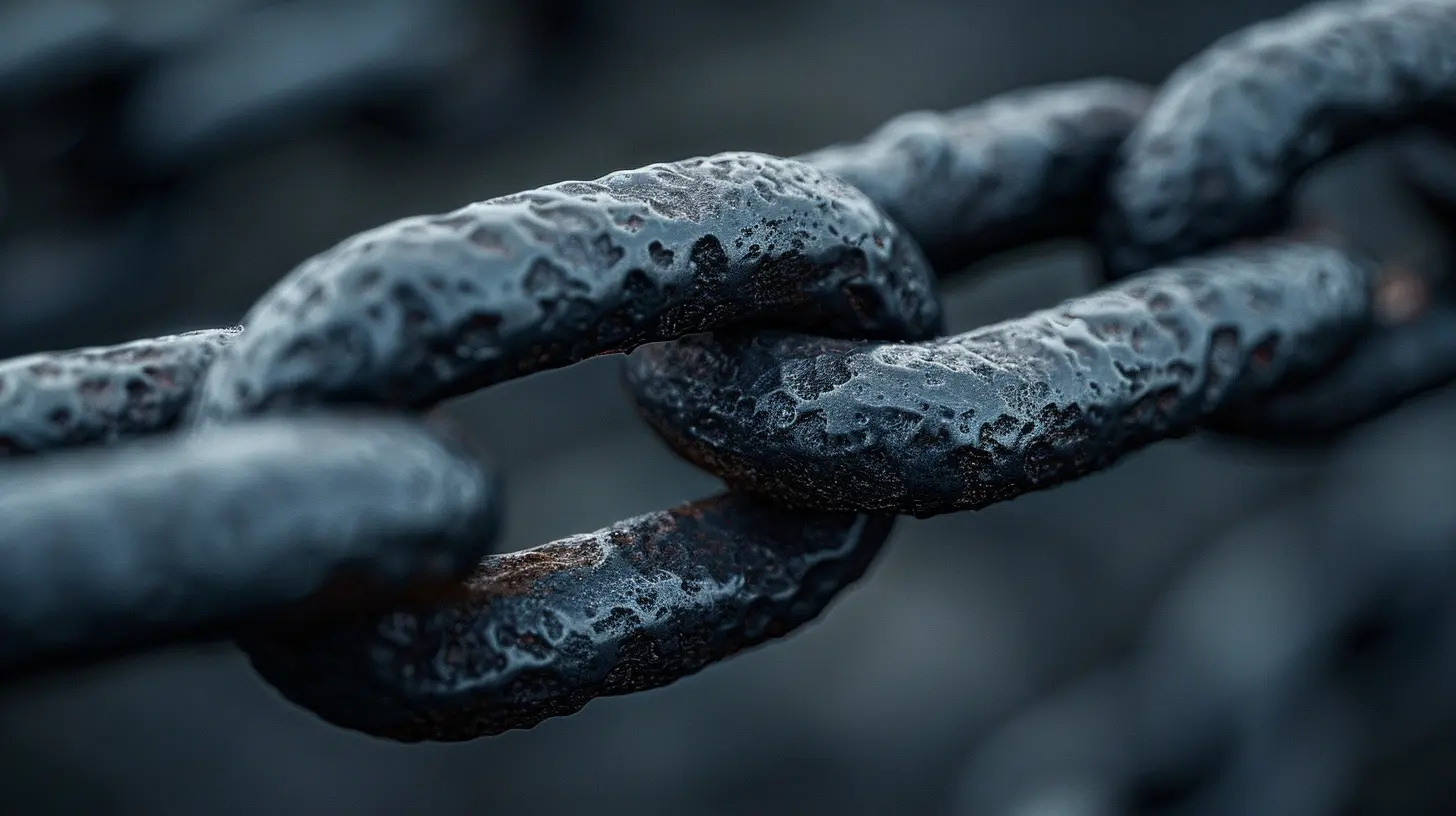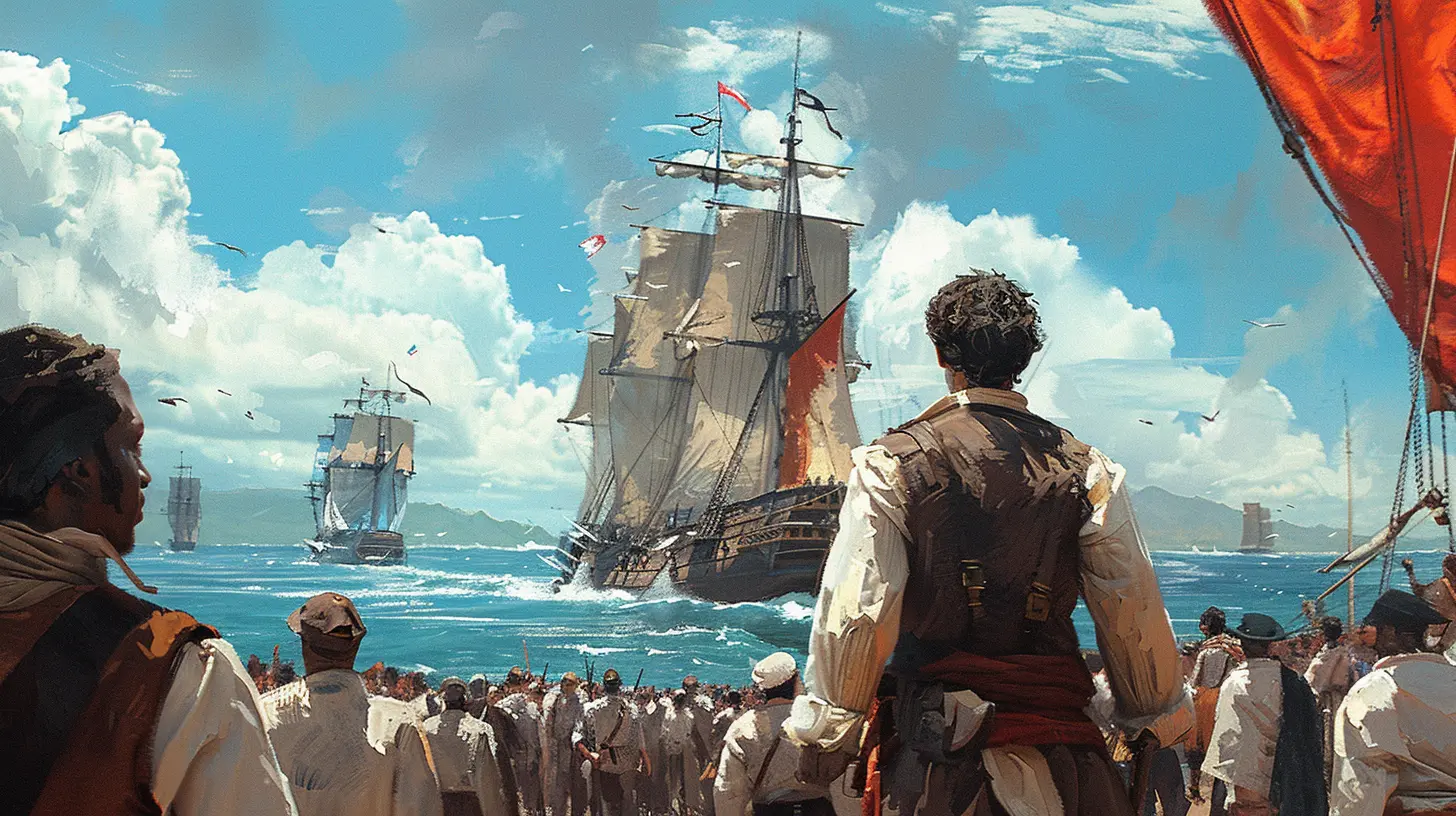The Transatlantic Slave Trade: Human Costs and Global Impact
18 May 2025
The Transatlantic Slave Trade was one of the darkest chapters in human history. It was a system that spanned nearly 400 years, tearing apart millions of lives and leaving a legacy of trauma, inequality, and global consequences that we still feel today. But what exactly was the Transatlantic Slave Trade? Why did it happen? And what were the human costs and global impacts that stemmed from it?
In this article, we’ll dive deep into these questions, exploring not just the cold, hard facts, but also the human stories behind the statistics. We'll aim to better understand how this horrific system shaped the world as we know it, and why its legacy is still so relevant in today’s discussions about race, economy, and society.
What Was the Transatlantic Slave Trade?
The Transatlantic Slave Trade, often referred to as the Atlantic Slave Trade, was the forced transportation of Africans across the Atlantic Ocean to work in the Americas, primarily from the 16th to the 19th century. Enslaved individuals were captured or traded in Africa, loaded onto ships, and sent to colonies in the New World, including the Caribbean, South America, and North America.It’s estimated that between 10 to 12 million Africans were enslaved and transported across the Atlantic during this period. But these numbers only tell part of the story. The impact of the trade rippled far beyond those who were taken. Entire communities were devastated, cultures were erased, and the trauma of slavery has had long-lasting effects that echo through generations.
The Triangular Trade: A System of Exploitation
The Transatlantic Slave Trade was part of a larger economic system known as the "Triangular Trade." This system connected Europe, Africa, and the Americas in a cycle of exploitation and profit. Here's how it worked in a nutshell:1. Europe to Africa: European ships loaded with manufactured goods (such as guns, cloth, and alcohol) sailed to Africa. These goods were traded for enslaved Africans.
2. Africa to the Americas (Middle Passage): This leg of the journey, known as the Middle Passage, was the most brutal. Africans were crammed into the holds of ships, with little food, water, or space to move. Diseases spread like wildfire, and many died before even reaching the Americas.
3. Americas to Europe: Once the enslaved individuals were sold in the Americas, the ships were loaded with raw materials like sugar, cotton, and tobacco, which were then shipped back to Europe. These products, created through forced labor, fueled European economies.
The Triangular Trade was, in essence, a cruel machine designed to turn human suffering into profit.
The Human Costs of the Slave Trade
It's essential not to lose sight of the human element when talking about the Transatlantic Slave Trade. Behind the numbers and the economic systems were real people—mothers, fathers, children—who were ripped from their homes and subjected to unimaginable horrors.The Brutality of the Middle Passage
The "Middle Passage" was the term for the harrowing journey that enslaved Africans endured across the Atlantic. Packed into the dark, cramped holds of ships, individuals were chained together, often lying in their own waste. Disease was rampant, and many did not survive the journey. It’s estimated that 15-20% of the enslaved died during the Middle Passage.Even those who survived the journey faced a grim reality upon arrival. They were sold like cattle at auctions, families were separated, and individuals were forced into a life of backbreaking labor with no hope of freedom.
The Dehumanization of Enslaved People
Once enslaved, Africans were treated as property rather than human beings. They were subjected to brutal physical punishment to enforce obedience, and many were worked to death. Enslaved women faced the additional horror of sexual exploitation and abuse.This dehumanization was not just physical—it was psychological as well. Enslaved individuals were stripped of their names, their languages, their cultures. In many ways, they were systematically erased as people, reduced to mere tools for economic gain.
The Loss of Cultural Heritage
The Transatlantic Slave Trade also resulted in a colossal loss of cultural heritage. African societies were rich in languages, traditions, religions, and practices, many of which were lost or severely altered due to the slave trade. Entire communities were either decimated or so disrupted that their way of life was forever changed.
Global Impact of the Transatlantic Slave Trade
While the human costs of the slave trade are undeniable, its impact didn't stop with the individuals who were enslaved. The Transatlantic Slave Trade had profound global consequences, shaping the economies, societies, and political landscapes of multiple continents.Economic Impact on Europe
One of the most significant impacts of the Transatlantic Slave Trade was its role in bolstering European economies. The raw materials produced by slave labor—particularly sugar, cotton, and tobacco—were essential to the rise of European mercantile and industrial economies.In some cases, entire cities in Europe grew wealthy from their involvement in the slave trade and exploitation of colonies. Liverpool and Bristol in the UK, for instance, were major slave-trading hubs, and their wealth was directly tied to the slave economy.
The Development of the Americas
In the Americas, the Transatlantic Slave Trade was essential to the development of colonial economies. Plantations, particularly in the American South and the Caribbean, relied on enslaved labor to produce crops like sugar, cotton, and tobacco for export.Over time, the reliance on slave labor became deeply ingrained in the economic and social fabric of many American colonies, with lasting legacies of racial inequality and segregation that continue to affect these societies today.
The Disruption of African Societies
The impact of the Transatlantic Slave Trade on Africa was equally devastating. Millions of people were taken from their homes, leading to the collapse of some societies and the destabilization of many others. The constant demand for slaves fueled violence and warfare, as African leaders and traders captured and sold their rivals to European traders in exchange for goods.This disruption also affected Africa’s long-term development. While Europe and the Americas were growing wealthier from the profits of the slave trade, many African societies were left weakened, impoverished, and vulnerable to future exploitation, including European colonization.
The Legacy of Racism
One of the most enduring legacies of the Transatlantic Slave Trade is the systemic racism that it helped to create and perpetuate. The idea that Africans were inferior to Europeans was used to justify the horrors of the slave trade and slavery itself. These racist ideologies didn’t vanish with the abolition of slavery—they became deeply embedded in the social, political, and economic systems of many countries, particularly in the Americas.Even today, the legacy of the Transatlantic Slave Trade continues to shape discussions about race, inequality, and justice. The economic, social, and psychological scars of slavery persist, and we see its impact in issues like racial profiling, economic disparities, and the ongoing fight for civil rights.
The Abolition of the Slave Trade
The Transatlantic Slave Trade didn’t end overnight. It took centuries of resistance by enslaved people, abolitionists, and even some European nations to bring about its eventual demise. The British Empire, for instance, abolished its participation in the slave trade in 1807 (though slavery itself continued in British colonies until 1833).In the United States, the importation of enslaved people was officially banned in 1808, though slavery continued to be practiced until the end of the Civil War in 1865. Throughout the Americas, enslaved individuals rebelled, ran away, and resisted in countless ways, contributing to the eventual abolition of slavery.
But while the Transatlantic Slave Trade is now a thing of the past, its legacy lives on in many ways, and the effects of this brutal system are still being felt today.
Conclusion: Remembering the Human Costs
The Transatlantic Slave Trade was a global tragedy that left an indelible mark on the world. The human costs—both in terms of lives lost and cultures destroyed—are incalculable. And while the economic and political impacts of the trade helped to shape the modern world, it’s important not to lose sight of the personal stories of suffering and survival.As we remember this dark chapter in history, we need to continue addressing its legacies: racism, inequality, and injustice. Only by acknowledging the full scope of the Transatlantic Slave Trade’s impact can we work toward a future where such atrocities are never repeated.
all images in this post were generated using AI tools
Category:
History LessonsAuthor:

Olivia Chapman
Discussion
rate this article
4 comments
Zanya Riggs
The Transatlantic Slave Trade serves as a stark reminder of humanity's capacity for cruelty and exploitation. Understanding its profound human costs and enduring global impact is essential, not only for honoring the past but also for fostering empathy and preventing future injustices.
May 29, 2025 at 3:03 AM

Olivia Chapman
Thank you for your insightful comment. It’s crucial to acknowledge this history to foster understanding and prevent future injustices.
Julian Warner
While history can be heavy, it’s important we learn from the past to create a brighter, more inclusive future!
May 28, 2025 at 4:34 AM

Olivia Chapman
Thank you for emphasizing the importance of learning from history. Acknowledging these painful truths is essential for fostering a more inclusive future.
Mitchell Middleton
This article effectively highlights the profound human costs of the Transatlantic Slave Trade, emphasizing not only the suffering endured by millions but also its far-reaching global consequences. By linking historical injustices to contemporary social issues, it underscores the need for ongoing discussions about race, inequality, and reparative justice in today's society.
May 21, 2025 at 1:04 PM

Olivia Chapman
Thank you for your thoughtful comment! I appreciate your recognition of the article's focus on the human costs and the importance of addressing these issues today.
Finley Williams
Reading about the Transatlantic Slave Trade is like finding a sock you thought was lost forever—unpleasant and a bit shocking. It’s a heavy topic, but understanding it helps us appreciate history and humanity’s capacity for resilience (and maybe rethink some of our favorite historical novels!).
May 19, 2025 at 12:50 PM

Olivia Chapman
Thank you for your insightful comment! It’s true that grappling with this dark chapter of history can be unsettling, but it’s crucial for fostering understanding and resilience.



